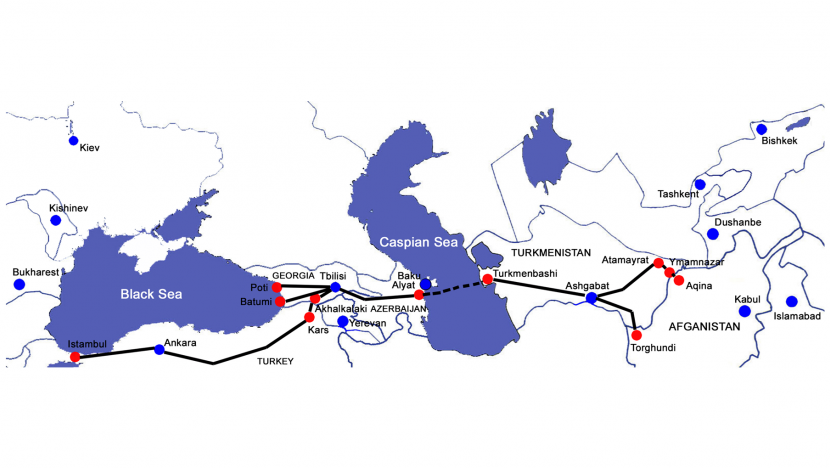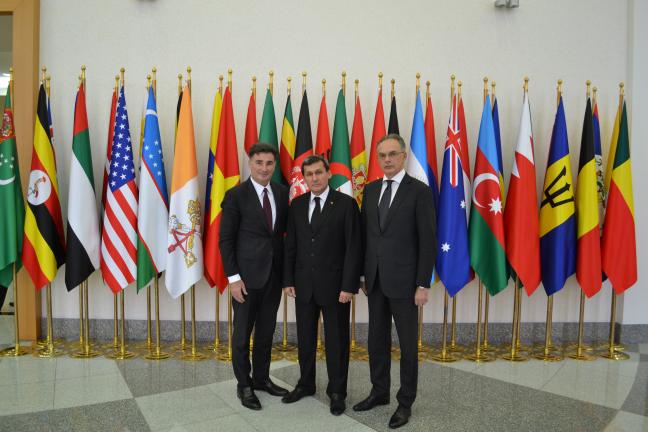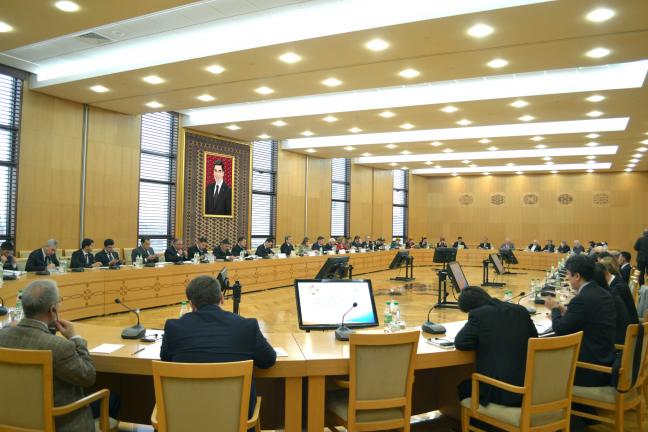IRU called for the use of digital TIR to realise the seamless intermodal trade potential of the Lapis Lazuli corridor to significantly increase economic growth, and drive progress, prosperity and ultimately peace to communities along the historic route.
The Lapis Lazuli Agreement on the development of trade between Afghanistan, Turkmenistan, Azerbaijan, Georgia, and Turkey headlined discussion at an international transport conference in Turkmenistan.
Speaking to an audience of ministers, senior officials and business leaders from the five countries, IRU Secretary General Umberto de Pretto made concrete proposals to enhance regional connectivity.
He stressed that while hard infrastructure linking the modes was imperative, the billions spent on that infrastructure would be rendered futile if not accompanied by the necessary soft infrastructure to prevent unsustainable border waiting times and congestion at ports and terminals.
To this end, he encouraged all countries along the Lapis Lazuli corridor, as well as those adjacent to the corridor, to implement digital TIR and e-CMR to effectively realise seamless intermodal container movements. He also proposed that governments issue multi-entry yearly visas for professional drivers, using the example of air crews and seafarers for whom such systems already exist, and called on countries to swiftly introduce digital visas.
Mr de Pretto had a separate meeting with the Minister of Foreign Affairs of Turkmenistan, H.E. Rashid Meredov to further strengthen cooperation between IRU, Turkmenistan and its neighbours along the Lapis Lazuli corridor.
The Lapis Lazuli Corridor begins in Aqina in northern Faryab province and Torghundi in western Herat, Afghanistan, and continues to the port on the Caspian Sea of Turkmenbashi in Turkmenistan; after passing the Caspian Sea, the route continues on to Baku, Azerbaijan, and then connects onward to Tbilisi, Georgia, as well as the Georgian ports of Poti and Batumi; finally, the corridor connects to the cities of Kars and Istanbul, Turkey, at the entrance of Europe.
The name “Lapis Lazuli” is derived from the historic route that Afghanistan’s lapis lazuli and other semi-precious stones were exported along, over 2,000 years ago, to the Caucasus, Russia, the Balkans, Europe, and North Africa.





